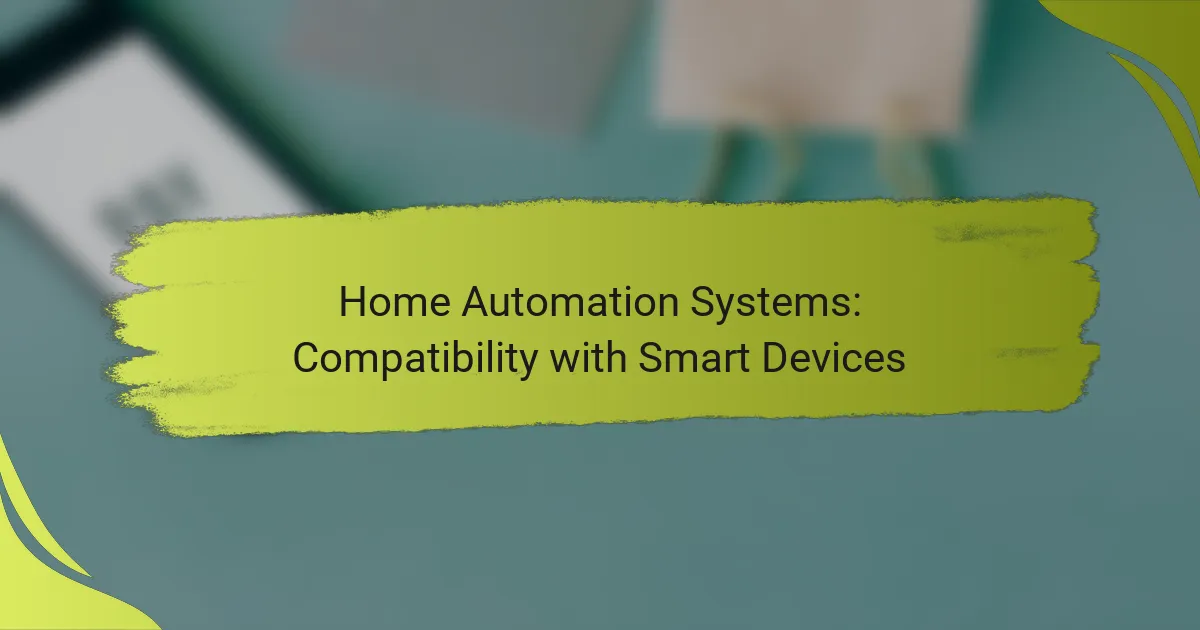Home automation systems play a crucial role in enhancing the functionality of smart devices within your home. With options like Google Nest Hub, Amazon Echo Plus, and Samsung SmartThings, these systems provide seamless integration, allowing for improved convenience and control. When selecting a system, it’s essential to consider compatibility with a wide range of devices to ensure a cohesive and efficient smart home experience.
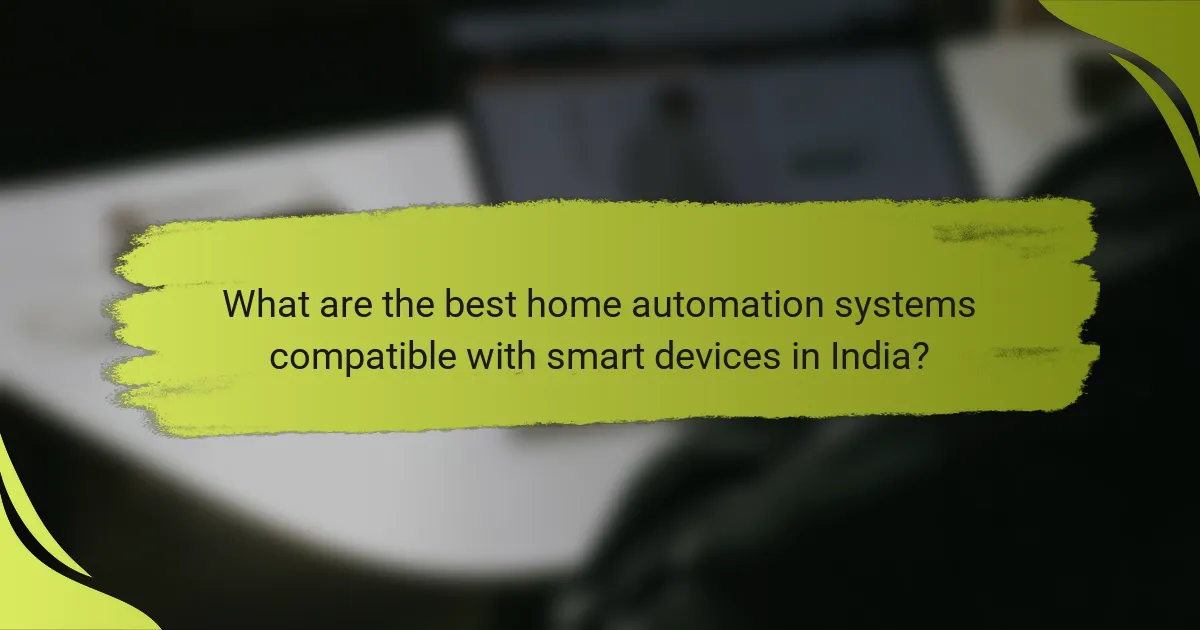
What are the best home automation systems compatible with smart devices in India?
The best home automation systems compatible with smart devices in India include Google Nest Hub, Amazon Echo Plus, Apple HomePod, Samsung SmartThings, and TP-Link Kasa Smart Home. These systems offer seamless integration with various smart devices, enhancing convenience and control in your home.
Google Nest Hub
Google Nest Hub is a versatile smart display that acts as a central control unit for various smart devices. It supports a wide range of products, including lights, thermostats, and security cameras, allowing users to manage their home environment through voice commands or touch controls.
One of its key features is Google Assistant, which provides hands-free operation and can answer queries, play music, or control compatible devices. The Nest Hub is particularly effective for users who already rely on Google services, as it integrates smoothly with Google Home and other applications.
Amazon Echo Plus
The Amazon Echo Plus is a smart speaker that doubles as a hub for Zigbee-compatible devices, making it a solid choice for home automation. It allows users to control lights, locks, and sensors directly through voice commands using Alexa.
With its built-in Zigbee hub, the Echo Plus simplifies the setup of smart devices, eliminating the need for additional hubs. This system is ideal for those who frequently use Amazon services, as it offers easy access to music, shopping, and smart home management.
Apple HomePod
Apple HomePod is designed for users within the Apple ecosystem, providing a seamless experience for controlling HomeKit-compatible devices. It offers high-quality audio and integrates with Siri for voice control, making it a great option for Apple enthusiasts.
While the HomePod supports fewer devices compared to other systems, its strong focus on privacy and security appeals to many users. It’s particularly effective for those who prioritize audio quality and already use Apple products like iPhones and iPads.
Samsung SmartThings
Samsung SmartThings is a comprehensive home automation platform that supports a wide range of devices, including those from third-party manufacturers. It allows users to create automated routines and control devices through a single app.
SmartThings is known for its flexibility, supporting both Zigbee and Z-Wave protocols, which enhances compatibility with various smart devices. This system is ideal for users looking to build a customized smart home setup with diverse products.
TP-Link Kasa Smart Home
TP-Link Kasa Smart Home offers a range of smart devices, including plugs, cameras, and bulbs, all manageable through the Kasa app. This system is user-friendly and does not require a hub, making it accessible for beginners.
With features like scheduling and remote access, Kasa devices allow users to control their home environment easily. This system is a great option for those looking for affordable smart home solutions without complex setups.
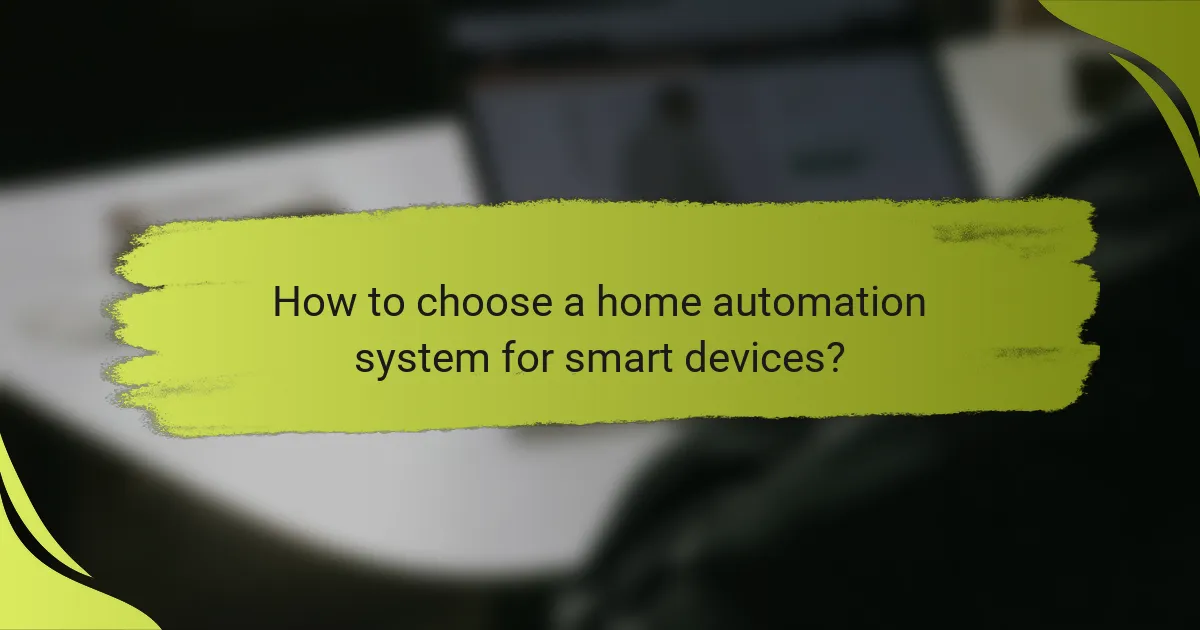
How to choose a home automation system for smart devices?
Choosing a home automation system for smart devices involves assessing compatibility, user interface, and integration with existing systems. Prioritize systems that support a wide range of devices to ensure seamless operation and user satisfaction.
Assess device compatibility
Start by checking which smart devices you already own and their compatibility with potential home automation systems. Look for systems that support popular protocols like Zigbee, Z-Wave, or Wi-Fi to maximize the number of devices you can connect.
Consider creating a list of your devices, including brands and models, to compare against the specifications of different automation systems. This will help you avoid purchasing a system that cannot control your existing devices.
Evaluate user interface
The user interface of a home automation system should be intuitive and easy to navigate. Look for systems that offer mobile apps or web interfaces that allow you to control devices remotely without confusion.
Read user reviews to gauge the overall experience with the interface. A well-designed interface can significantly enhance your interaction with the system, making it easier to set up automations and manage devices.
Consider integration with existing systems
Evaluate how well the home automation system integrates with any existing smart home ecosystems you may have, such as Amazon Alexa, Google Assistant, or Apple HomeKit. Compatibility with these platforms can enhance functionality and provide a unified control experience.
Additionally, check if the system allows for future expansions or integrations with new devices. A flexible system will save you from having to replace it as your smart home evolves.
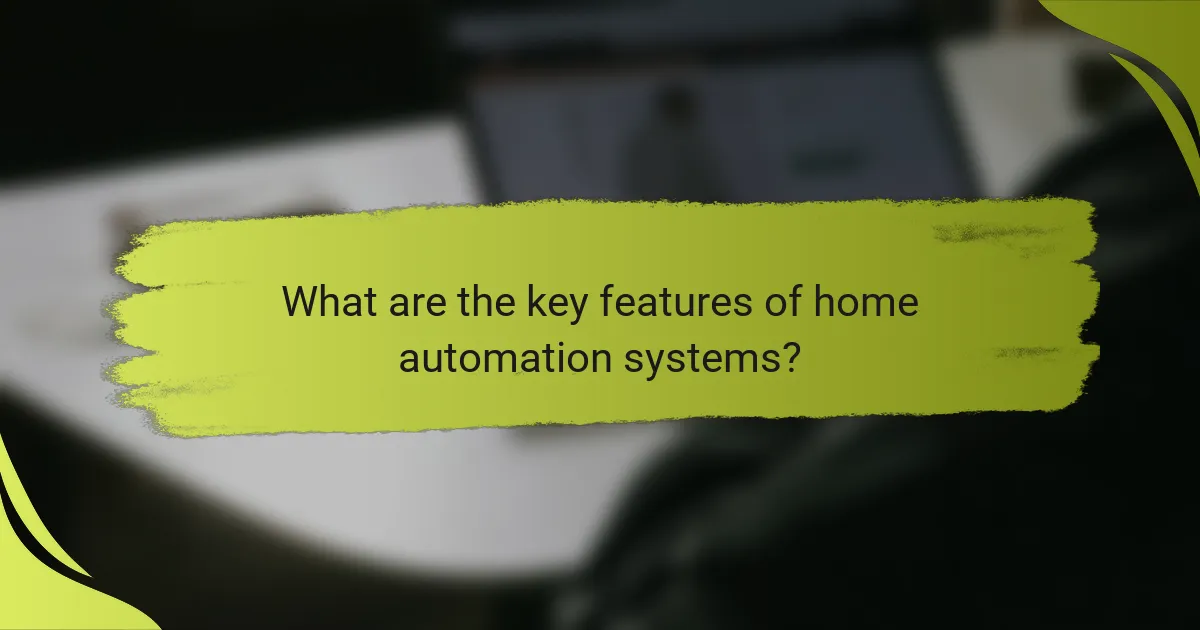
What are the key features of home automation systems?
Home automation systems typically offer features that enhance convenience, security, and energy efficiency. Key functionalities include remote control access, voice command capabilities, and energy monitoring, allowing users to manage their smart devices seamlessly.
Remote control access
Remote control access enables users to operate their home automation systems from anywhere using a smartphone or tablet. This feature is essential for monitoring security cameras, adjusting thermostats, or turning lights on and off while away from home.
Many systems support apps that provide real-time notifications and allow for scheduling tasks. Ensure that your chosen system is compatible with your devices and offers a user-friendly interface for effective remote management.
Voice command functionality
Voice command functionality allows users to control their home automation systems through voice-activated devices like Amazon Alexa or Google Assistant. This hands-free operation enhances convenience, especially when multitasking or when physical interaction with devices is impractical.
When selecting a home automation system, check for compatibility with popular voice assistants and the range of commands supported. This can significantly expand the usability of your smart devices, making everyday tasks easier.
Energy monitoring capabilities
Energy monitoring capabilities help users track and manage their energy consumption, leading to potential cost savings. Many home automation systems provide insights into energy usage patterns, allowing for adjustments that can reduce bills.
Look for systems that offer detailed reports and alerts for unusual consumption spikes. This feature can be particularly beneficial for identifying energy-hungry devices and optimizing their usage, contributing to a more sustainable home environment.

What are the installation requirements for home automation systems?
Installing a home automation system typically requires a reliable Wi-Fi network, compatible smart devices, and considerations for electrical systems. Ensuring these elements are in place will facilitate a smoother setup and optimal performance of your automation system.
Wi-Fi network setup
A strong and stable Wi-Fi network is crucial for the functionality of home automation systems. Most smart devices rely on Wi-Fi to communicate with each other and with your smartphone or control hub. Aim for a router that supports dual-band frequencies (2.4 GHz and 5 GHz) to enhance connectivity and reduce interference.
Consider the layout of your home when setting up your Wi-Fi. Devices located far from the router may experience connectivity issues. Using Wi-Fi extenders or mesh networks can help ensure consistent coverage throughout your home.
Smart device compatibility check
Before installing a home automation system, verify that your smart devices are compatible with the chosen platform. Many systems support a range of devices from various manufacturers, but not all devices will work seamlessly together. Check the specifications and compatibility lists provided by the automation system’s manufacturer.
Additionally, consider using devices that adhere to common standards like Zigbee or Z-Wave, which can enhance interoperability. This will allow you to mix and match devices from different brands without compatibility issues.
Electrical considerations
Electrical considerations are essential for the installation of home automation systems, especially for devices that require hardwiring. Ensure that your home’s electrical system can support the additional load of smart devices, particularly if you are integrating lighting or HVAC systems.
For devices that need to be hardwired, it may be necessary to consult a licensed electrician to ensure compliance with local electrical codes. Also, consider the placement of outlets and switches to facilitate easy access and installation of smart devices.
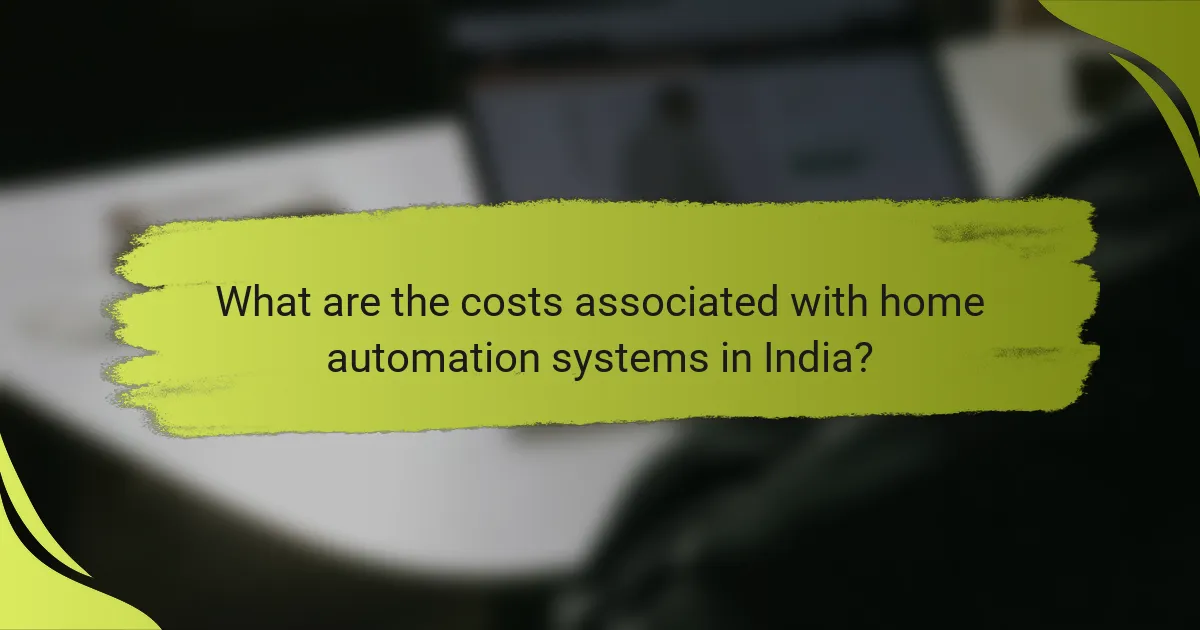
What are the costs associated with home automation systems in India?
The costs of home automation systems in India can vary significantly based on the complexity of the system and the devices involved. Initial setup costs typically range from a few thousand to several lakhs of Indian Rupees, while ongoing monthly subscription fees may add to the overall expense.
Initial setup costs
Initial setup costs for home automation systems in India can range from INR 10,000 to over INR 1,00,000, depending on the number of devices and the sophistication of the system. Basic setups may include smart lighting and security cameras, while advanced systems could integrate HVAC control, smart locks, and more.
When budgeting for initial costs, consider factors such as installation fees, device prices, and any necessary infrastructure upgrades. It’s wise to obtain quotes from multiple providers to ensure competitive pricing.
Monthly subscription fees
Monthly subscription fees for home automation services in India can range from INR 500 to INR 3,000 or more, depending on the features and level of support offered. Basic plans may cover remote access and monitoring, while premium plans might include advanced analytics and additional device integrations.
Before committing to a subscription, evaluate the features you need and compare plans from different service providers. Be cautious of hidden fees or long-term contracts that may lock you into a service that doesn’t meet your needs.
